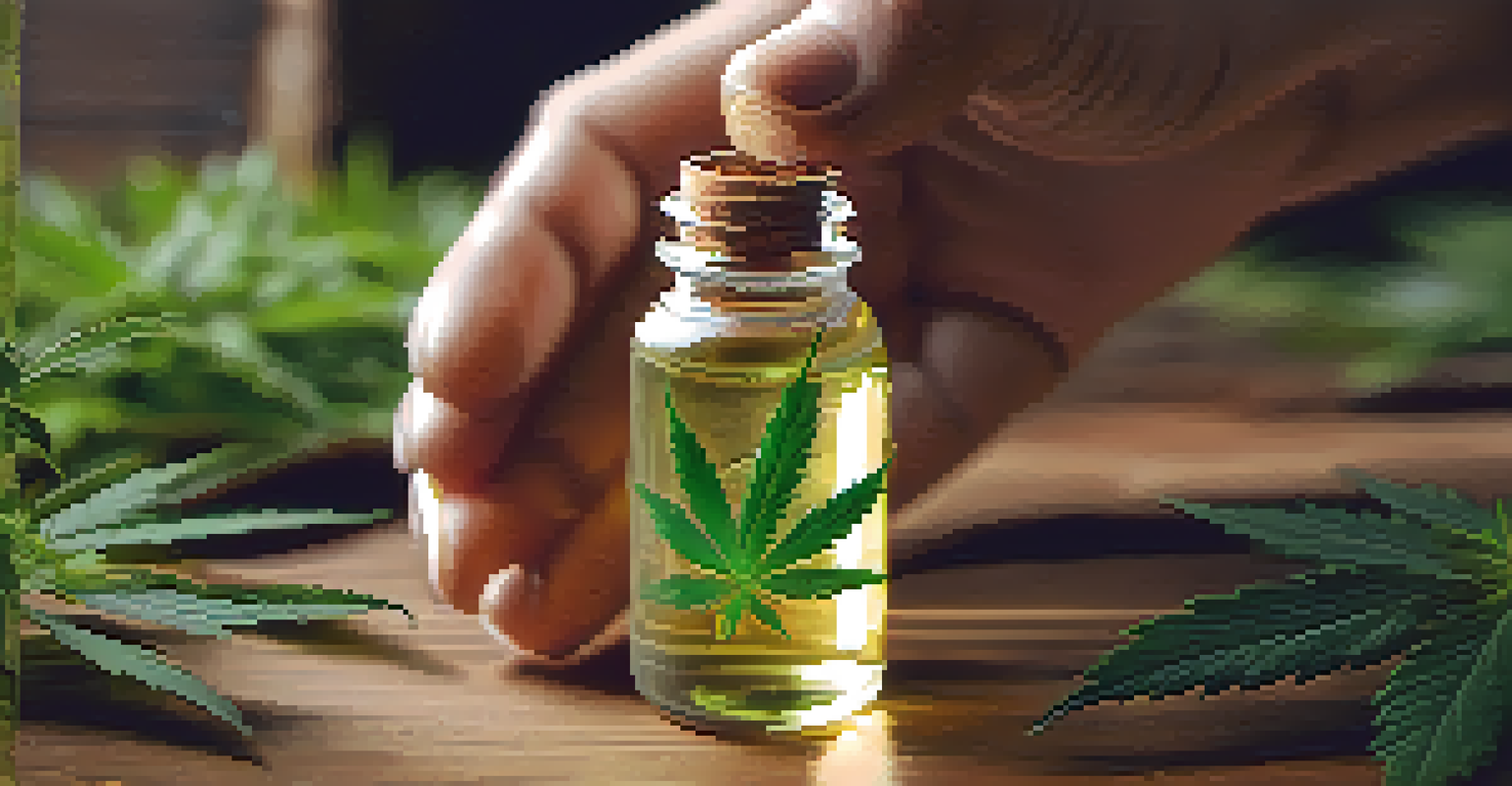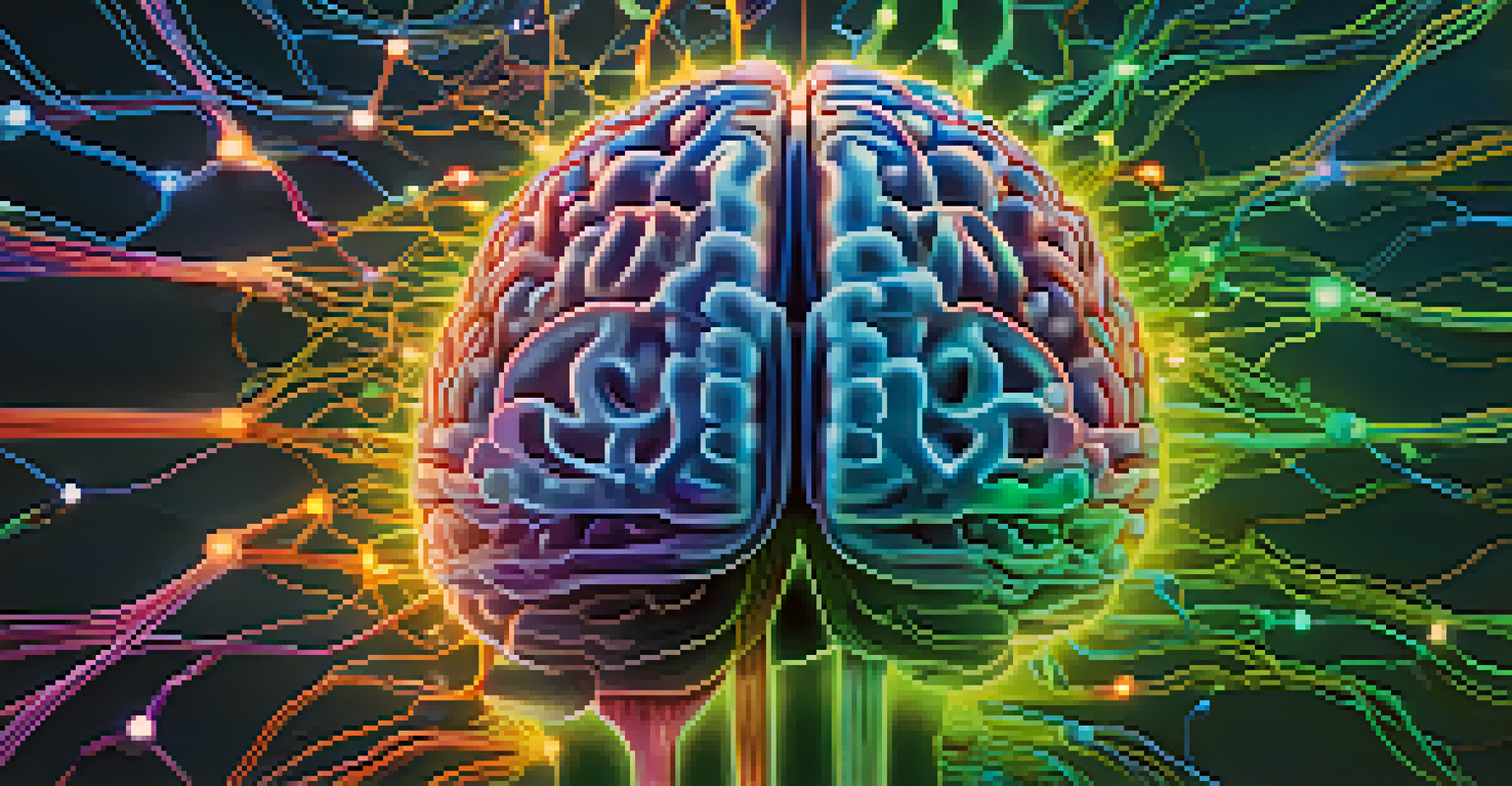Marijuana for Opioid Addiction: A Harm Reduction Approach

Understanding Opioid Addiction and Its Challenges
Opioid addiction is a complex issue that affects millions of people worldwide. It begins often with prescription painkillers and can escalate to illicit substances, leading to serious health risks. The physical dependence on opioids makes quitting extremely difficult, with withdrawal symptoms that can be debilitating. Understanding this addiction is crucial to exploring effective treatment options, including harm reduction strategies.
Addiction is a complex condition, a brain disorder that is manifested by compulsive substance use despite harmful consequences.
The traditional approach to treating opioid addiction often involves detoxification and long-term recovery programs. However, these methods may not work for everyone, and some individuals may relapse after treatment. This is where harm reduction strategies come into play, aiming to minimize the negative consequences associated with drug use rather than insisting on complete abstinence. With this in mind, the exploration of alternative treatments like marijuana becomes increasingly relevant.
Marijuana, particularly its compounds like CBD, has gained attention for its potential therapeutic benefits. Some studies suggest that cannabinoids can help reduce opioid cravings and withdrawal symptoms, offering a new pathway for those struggling with addiction. But how does marijuana fit into the broader conversation about opioid addiction treatment?
What is Harm Reduction in the Context of Addiction?
Harm reduction is a public health strategy aimed at reducing the negative consequences of drug use. Instead of insisting on complete abstinence, it acknowledges that while some individuals may not be ready to quit, they can still engage in safer practices. This could involve providing clean needles, safe consumption spaces, or, in this case, alternatives to opioids like marijuana.

The philosophy behind harm reduction is rooted in compassion and pragmatism. It recognizes that addiction is a chronic condition that requires long-term management rather than a one-size-fits-all solution. By offering options that reduce harm, individuals can make informed choices about their health and wellbeing, which may ultimately lead them towards recovery.
Opioid Addiction's Complex Nature
Opioid addiction is a multifaceted issue that often starts with prescription painkillers and leads to serious health risks.
Marijuana as a harm reduction tool presents a compelling option for those caught in the cycle of opioid use. By easing withdrawal symptoms and cravings, it may provide a safer alternative, helping individuals take steps towards recovery without the intense discomfort often associated with quitting opioids.
Cannabinoids: What Are They and How Do They Work?
Cannabinoids are natural compounds found in the cannabis plant, with the most well-known being THC and CBD. THC is the psychoactive component that produces a 'high,' while CBD is non-psychoactive and is often praised for its therapeutic effects. Understanding the difference between these compounds is key, especially when considering their potential in treating opioid addiction.
The use of marijuana as a treatment for opioid addiction represents a potential shift in how we approach addiction recovery.
Research suggests that cannabinoids may interact with the brain's endocannabinoid system, which plays a role in regulating mood, pain, and cravings. By modulating these pathways, cannabinoids could potentially alleviate some of the discomfort associated with opioid withdrawal. This interaction opens up exciting possibilities for using marijuana as a tool in harm reduction strategies.
However, it’s important to note that while cannabinoids may help, they are not a panacea. They should be viewed as part of a broader treatment plan that includes counseling and support. As we explore the potential of marijuana in this context, it’s crucial to remain grounded in the science and understand both its benefits and limitations.
Current Research on Marijuana and Opioid Addiction
Emerging studies indicate a correlation between increased marijuana use and decreased opioid-related deaths. In states where medical marijuana is legal, there have been reports of lower rates of opioid prescriptions and overdoses. These findings suggest that marijuana could serve as a viable alternative for pain management, potentially reducing reliance on more dangerous opioids.
In addition to these correlations, some clinical trials are investigating the efficacy of cannabinoids in treating opioid withdrawal symptoms. Preliminary results show promise, with participants reporting decreased cravings and discomfort. However, it's essential to approach these findings with caution, as more extensive research is needed to establish definitive conclusions.
Harm Reduction Emphasizes Choices
Harm reduction strategies focus on minimizing the negative effects of drug use, offering safer alternatives like marijuana for those not ready to quit.
As the landscape of addiction treatment evolves, it becomes increasingly important to consider how marijuana can fit into comprehensive care. The research is still in its infancy, but it offers a glimmer of hope for a more nuanced approach to managing opioid addiction.
Legal and Ethical Considerations Surrounding Marijuana Use
The legal status of marijuana varies widely across different regions, complicating its use as a treatment for opioid addiction. In some places, it is fully legal for recreational and medical use, while in others, it remains strictly prohibited. This patchwork of regulations can create confusion and hinder access for those who may benefit from its use.
Ethically, the conversation around using marijuana as a harm reduction strategy raises questions about responsibility and safety. While many argue that it offers a safer alternative to opioids, there are concerns about potential misuse and the long-term effects of marijuana use itself. Balancing these considerations is crucial in developing policies that protect public health while providing access to effective treatment options.
As advocates for harm reduction push for more inclusive policies, it’s essential to engage in open discussions about the implications of marijuana use. Through education and dialogue, we can work towards a future where individuals have access to a range of safe, effective options for managing addiction.
Personal Stories: Experiences with Marijuana for Addiction
Real-life stories can often illuminate the impact of treatments in ways that statistics cannot. Many individuals have shared their journeys of using marijuana to overcome opioid addiction, highlighting how it helped ease their transition. These personal anecdotes often reveal a sense of empowerment, as individuals take control of their recovery in a way that traditional methods didn’t allow.
For example, one individual recounted how using marijuana during withdrawal made the symptoms more bearable, enabling them to focus on rebuilding their life. They emphasized that while marijuana wasn't the sole solution, it provided a crucial support system during a challenging time. Stories like these can inspire hope and demonstrate the potential for marijuana to serve as an adjunct to traditional treatment methods.
Marijuana Shows Promise in Recovery
Research indicates that marijuana may help reduce opioid cravings and withdrawal symptoms, potentially serving as a valuable tool in addiction recovery.
However, it’s important to remember that each experience is unique. What works for one person may not work for another, and the journey to recovery can be unpredictable. Yet, sharing these narratives contributes to a broader understanding of how marijuana can play a role in harm reduction and addiction treatment.
The Future of Marijuana in Opioid Addiction Recovery
As we look to the future, the role of marijuana in opioid addiction recovery continues to evolve. With ongoing research and changing legal landscapes, there is potential for more widespread acceptance of marijuana as a treatment option. This shift could lead to more integrated approaches that combine traditional therapies with alternative options like cannabinoids.
Moreover, as society becomes more open to discussing addiction and its complexities, there is an opportunity to destigmatize the use of marijuana in recovery. By fostering an environment where individuals feel safe exploring different treatment modalities, we can empower them to make informed decisions about their health and wellbeing.

Ultimately, the future will depend on continued research, policy changes, and a commitment to prioritizing patient-centered care. As we navigate this path, the conversation about marijuana as a harm reduction strategy offers hope for many seeking a way out of the cycle of opioid addiction.